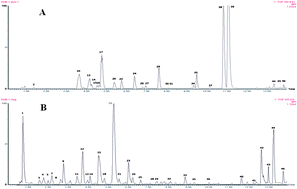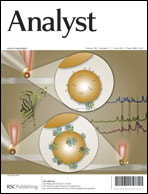To discover and screen the constituents or metabolites absorbed into blood after oral administration of herbal medicines tends to be more and more difficult. In this work, an integrative pattern recognition approach of principal component analysis (PCA) and orthogonal partial least squared discriminant analysis (OPLS-DA) was successfully applied for rapid discovery of natural compounds from herbal medicines. A rapid, sensitive, and reliable ultra performance liquid chromatography coupled with electrospray ionization/quadrupole-time-of-flight mass spectrometry (UPLC-ESI-Q-TOF-MS) method with Masslynx™ software was established to characterize the chemical constituents and rats metabolites of Phellodendri amurensis cortex (Guan Huangbai, GHB). The analysis was performed on a Waters UPLC HSS T3 column (2.1 × 100 mm, 1.8 μm) using gradient elution system. A hyphenated electrospray ionization and quadrupole-time-of-flight analyzer was used for the determination of accurate mass of the protonated or deprotonated molecule and fragment ion in both negative and positive modes. A total of 46 peaks were obtained, 41 of which were tentatively characterized from GHB. In the S-plot of OPLS-DA, 24 interested ions (17 ions in positive mode and 6 ions in negative mode) were extracted, among them, 12 absorbed prototype components of GHB and 12 metabolites were identified in vivo. Major metabolic reactions of GHB were demethylation, methylation and glucuronidation. This is the first report on systematic analysis of chemical constituents and in vivo metabolites of GHB. It is concluded that UPLC-MS coupled with pattern recognition approach for the identification of herbal constituents in biological samples has been successfully developed. The method can also be applied to rapid discovery and global characterization of the constituents in rat serum after oral administration of other herbal medicines.

You have access to this article
 Please wait while we load your content...
Something went wrong. Try again?
Please wait while we load your content...
Something went wrong. Try again?


 Please wait while we load your content...
Please wait while we load your content...